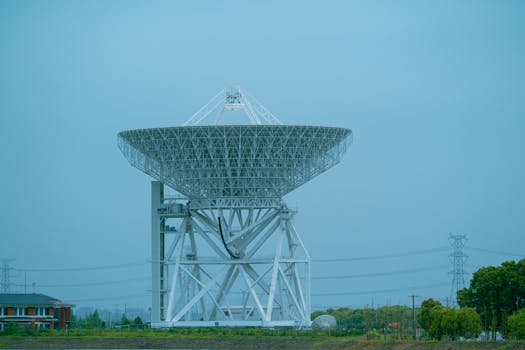
Harnessing the Skies: New Technologies Transforming Satellite Communications
Harnessing the Skies: New Technologies Transforming Satellite Communications is revolutionizing the way we communicate and access information. The satellite communication industry is undergoing a significant transformation with the advent of new technologies, and this article will delve into the latest developments and innovations in the field.
Satellite communications have been around for decades, but recent advancements in technology have made it possible to provide faster, more reliable, and more secure connections. One of the key drivers of this transformation is the development of new satellite constellations, such as OneWeb and Starlink, which are designed to provide global coverage and high-speed connectivity.
These new constellations are made up of hundreds of small satellites that work together to provide a network of connectivity. They use advanced technologies such as phased array antennas and digital beamforming to provide high-gain and high-throughput connectivity. This allows for faster data transfer rates and more reliable connections, making it possible to support a wide range of applications, from broadband internet access to IoT connectivity.
New Technologies and Innovations
In addition to new satellite constellations, there are several other new technologies and innovations that are transforming the satellite communications industry. One of the most significant is the development of advanced propulsion systems, such as electric propulsion and Hall effect thrusters. These systems allow satellites to maneuver more efficiently and extend their lifespan, reducing the cost of satellite operations and making it possible to launch more satellites into orbit.
Another key innovation is the development of new materials and manufacturing techniques, such as 3D printing and advanced composites. These allow for the creation of lighter, more efficient, and more cost-effective satellites, making it possible to launch more satellites into orbit and reduce the cost of satellite communications.
Artificial intelligence and machine learning are also being used to improve satellite communications, by optimizing satellite operations, predicting and preventing errors, and improving the overall efficiency of satellite systems. This allows for more reliable and efficient connections, and enables the provision of more advanced services, such as real-time video streaming and online gaming.
Applications and Use Cases
The new technologies and innovations in satellite communications are enabling a wide range of applications and use cases, from broadband internet access to IoT connectivity. One of the most significant is the provision of broadband internet access to remote and underserved communities, where traditional connectivity options are limited or non-existent.
Satellite communications are also being used to support IoT connectivity, enabling the connection of devices and sensors in remote and hard-to-reach areas. This allows for the monitoring and management of critical infrastructure, such as pipelines and transportation systems, and enables the provision of more efficient and effective services, such as smart agriculture and smart cities.
In addition, satellite communications are being used to support emergency response and disaster relief efforts, providing critical connectivity and communications services in the aftermath of natural disasters and other crises. This allows for the coordination of relief efforts, the provision of critical services, and the support of affected communities.
Conclusion
In conclusion, the satellite communication industry is undergoing a significant transformation with the advent of new technologies and innovations. The development of new satellite constellations, advanced propulsion systems, new materials and manufacturing techniques, and the use of artificial intelligence and machine learning are all contributing to the transformation of the industry.
These new technologies and innovations are enabling a wide range of applications and use cases, from broadband internet access to IoT connectivity, and are supporting emergency response and disaster relief efforts. As the industry continues to evolve, we can expect to see even more innovative solutions and applications, and the satellite communications industry will play an increasingly important role in shaping the future of global connectivity.




